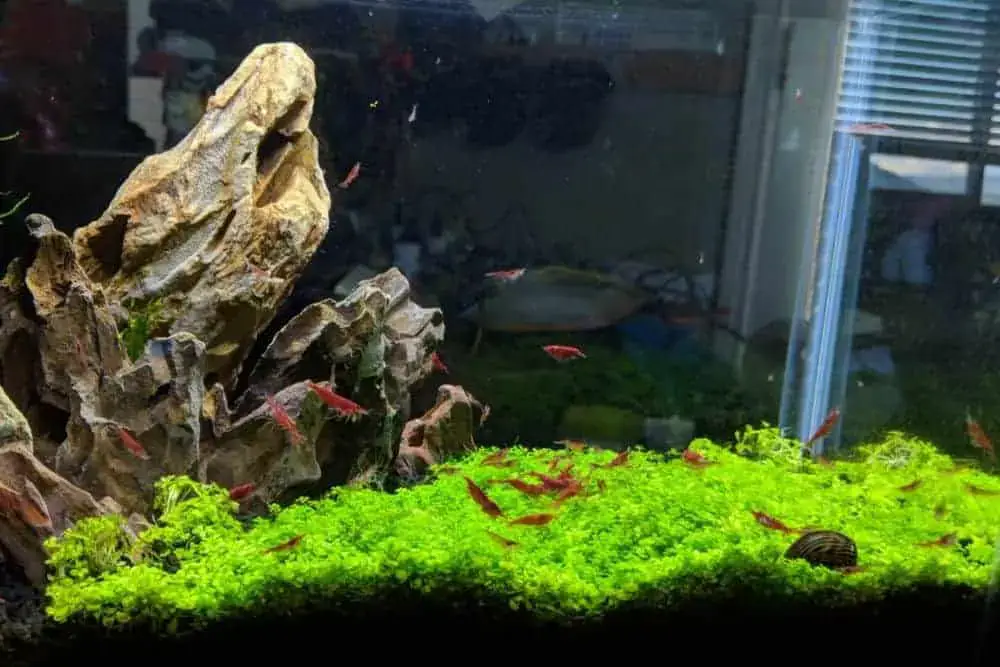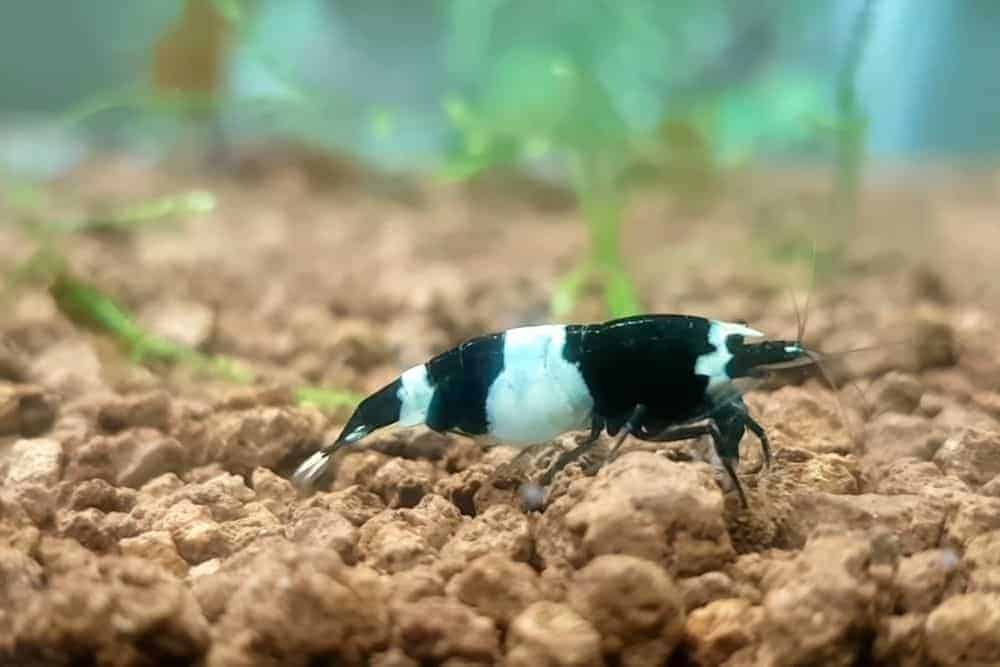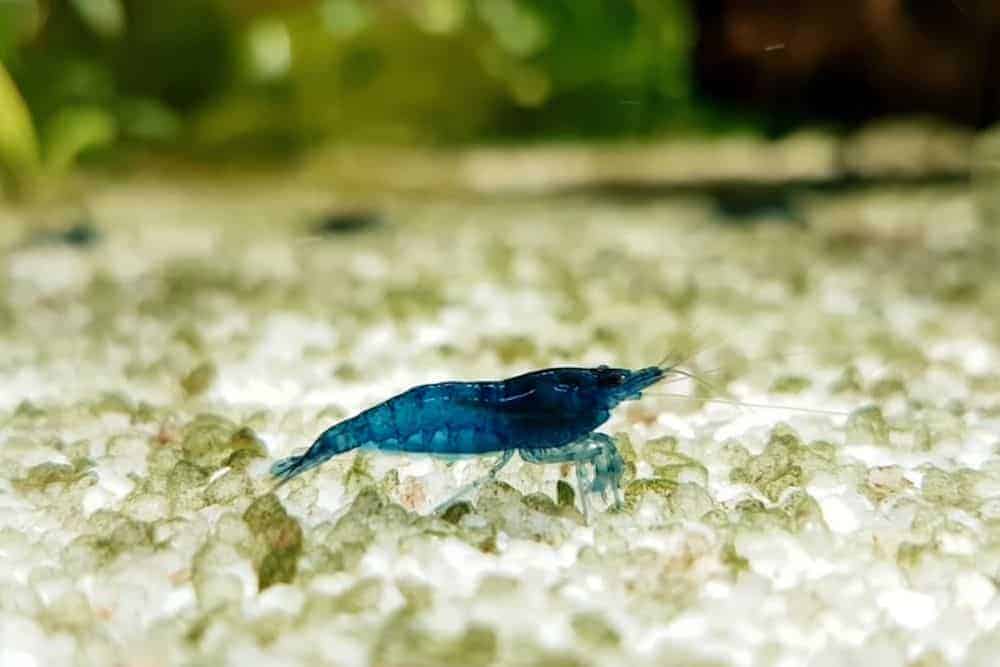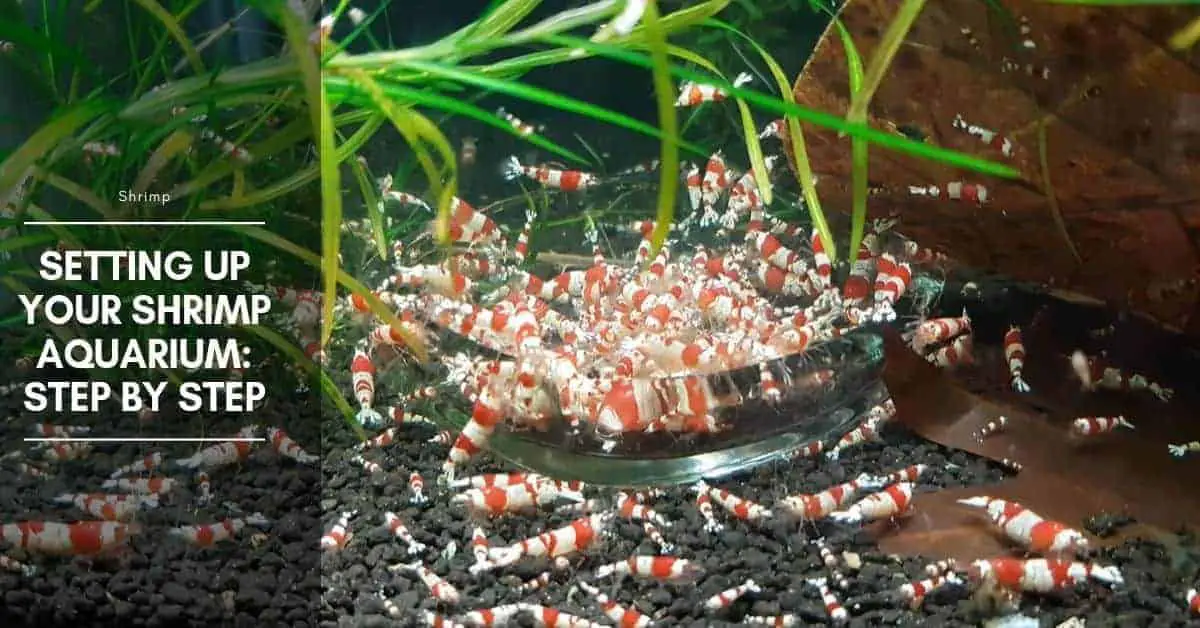A well-prepared shrimp aquarium always means resounding success in the hobby, thus making a perfect addition to your room or office. This guide will help you setup your dream shrimp aquarium and choose some tank mates you can put in.
How to set up a shrimp tank?
- Rinse the aquarium with tap water. Never use soap because it contains chemicals that are potentially harmful to shrimps. Allow 1 liter of water for every shrimp. This means that a 4-gallon tank can keep 16 shrimps safely.
- Put the substrate. Proper preparation for the substrate is to rinse them with boiling water.
- Add plants/moss of your choice. Aquarium plants will serve as climbing tools for your shrimps. It will also aid up in the removal of ammonia in the water.
- Decorate your shrimp aquarium. Look out for pieces of wood that will perfectly fit in your aquarium without occupying too much space. Before putting it in the water, soak the wood for 1-2 days in order to remove elements that will stain the water.
- Fill up the tank with water. After that, you can set up the lighting and filter. It is best to put the shrimps in the tank after a week to let the plants grow first.
- Add several Stress Zyme into the water. Stress Zyme will cycle your water in the aquarium.
Where will I put my tank?
Decide where to display your tank. This will also determine the size you buy. It is always nice to buy a small tank, but a 20-25 gallon tank is ideal for a beginner. Fishbowls may suffocate shrimps either because of the accumulation of their waste or lack of oxygen.

Important points when choosing the location of the tank:
- Don’t put it in an area where there is too much sunlight as this will cause rapid growth of algae.
- To ease in the maintenance of water temperature, bear in mind not to put the tank under a vent, for dust will blow out and fall into the tank.
- Consider a place near an outlet to power lights and filters.
- Put styrofoam under the tank for even pressure (optional).
What tank should I buy?
The space you have chosen will determine the size of the tank you will buy. Consider also the shrimp you would like to keep. Choose a bigger tank if you want adult-sized shrimps. If you plan to put live plants, choose a taller tank to give them room to grow taller. It is also ideal to pair “java” or “spiky” moss, as these can reduce nitrate and are the hardiest.
What filtration system would I use?
As a starter, choose the most common and easiest system which is the power filter. Power filters may be hung at the back of the tank. Undergravel filters are also recommended but you cannot use these if you plan to have sand or other fine substances. If you don’t regularly vacuum the gravel, it will clog the filter and turn the tank into a killing zone.
Will I use a substrate?
The Aquarium substrate is a key factor in having the finest-looking shrimp aquarium setup. Shrimp shops offer a wide range of colors and textures to choose from. Consider choosing those that will make your pets feel at home like choosing natural-looking rather than bright-colored substrates. The filter you will use will limit your choice of substrate. For example, if you use an underground filter, sand will not work with this type. Use those that are larger in diameter instead.
However, the deciding factor in choosing a substrate is that which appeals to your taste the most as long as your shrimps will live safely.
API STRESS COAT Aquarium Water Conditioner 16-Ounce Bottle
29% OffAPI STRESS ZYME Freshwater and Saltwater Aquarium Cleaning Solution 16-Ounce Bottle
Tetra Chlorine Remover 3.38 Ounces, Conditions Aquarium Water for Use in Aquariums, 100ml
20% Off
Check for any leaks in the tank
This can be checked by filling the tank with about three inches of water. Let two hours pass to see if leaks will show up. If you notice any leak, apply sealant in the affected area in order to fix the problem immediately.
Choose shrimps

The types of freshwater shrimps suitable for aquariums have already been discussed. Choose from among them the type you would want to keep in your shrimp tank. Never get shrimp that you will not be able to manage in the long run. After choosing the kind of shrimp, you may order them from your chosen shrimp store.
Add tank mates
Start with one kind for the first ten days, then add one more. Wait for another ten days to add another. Don’t put too many different creatures to prevent overpopulation.
You can make your shrimp aquarium extra-attractive by putting tank mates. You will surely enjoy watching your shrimps interact with other aquatic animals. Choosing potential cohabitants for your pets needs extra care because your most-loved shrimps, specially ordered at extraordinary prices, may end up consumed which is something you don’t want to happen.
Suggested safe shrimp tank mates you can add when you completed with the tank setup:
Snails
Freshwater snails are potentially safe tank mates for shrimps, specifically Dwarf Shrimps because of their beautiful color and not-so-ordinary looks. Characterized as scavengers, snails exhibit other beneficial uses, so they are simply a good choice because they will not consume live plants and they don’t feed on fry or adult shrimps.
You can choose one or two kinds from the following types:
- Planorbiscorneus or Red Ramhorn Snails. They are usually tossed in fry tanks to clean up excess food. They aren’t a real danger because they don’t damage your expensive aquatic plants.
- Melanoides tuberculata or Malaysian Trumpet Snail serves an important function which is breaking up the substrate. The effect would be reduced by anaerobic bacteria.
- The spixi snail, also known as the zebra apple snail, has a smooth shell with a yellow or white base color and dark brown to almost black spiral stripes, which gives it a zebra-like look, hence the name. Unlike other snails, this type is made popular because it has long tentacles. They clean up the food the shrimps do not eat.
Fish
Aside from snails, you can also add other inhabitants like fishes into your shrimp aquarium. You may consider taking Otto (Otocinclus sp.) cat and Plecostomus. Aquarists have proven that these algae eaters are 99.9% safe enough to live with your shrimps. Take note that Otto cat is a good fit for smaller aquariums while the Plecostomus sp. are more likely to grow in larger aquariums.
Expert aquarists also advise neophytes to choose small fishes like Corydoras catfish, Whitecloud Fancy Guppies, and Bettas as these don’t usually quarrel and spar with the shrimps. Also compatible are Small Tetras like Neon Tetras, Glow Light Tetras, and Black Phantom Tetras. These are so tiny that they could not gulp down the shrimps.
Hobbyists suggest additional animals like African Dwarf frogs and Harlequin Rasboras to complement your freshwater shrimp aquarium.
In conclusion
Setting up a shrimp aquarium is not as hard as you think. As long as you are a dedicated aquarium hobbyist, everything would be fairly easy. Take into consideration these helpful tips as these are always regarded as acceptable parameters:
- Maintain a pH range of 6.0-7.6 and a temperature range of 65-80 degrees Fahrenheit.
- Frequent water changes, about 20% a month, aid in keeping water parameters stable, as long as you do not overfeed the shrimps.
- Ammonia, Nitrite, and Nitrate are just some harmful elements found in an aquarium that may kill the creatures living in it. In order to eliminate these, always check the filtration system and cycle.
- Keep the aquarium community calm by including creatures that are all friendly with each other.
Following these tips will certainly create a good home for your shrimps.
Note that as you move up to keeping more difficult shrimps, you will need to start targeting specific water parameters for each shrimp type.

Hi, my name is Sean, and I’m the primary writer on the site. I’m blogging mostly about freshwater and saltwater aquariums, fish, invertebrates, and plants. I’m experienced in the fishkeeping hobby for many years. Over the years I have kept many tanks, and have recently begun getting more serious in wanting to become a professional aquarist. All my knowledge comes from experience and reading forums and a lot of informative sites. In pursuit of becoming a professional, I also want to inspire as many people as I can to pick up this hobby and keep the public interest growing.
Read more about Sean.
Please join also my Facebook group.















